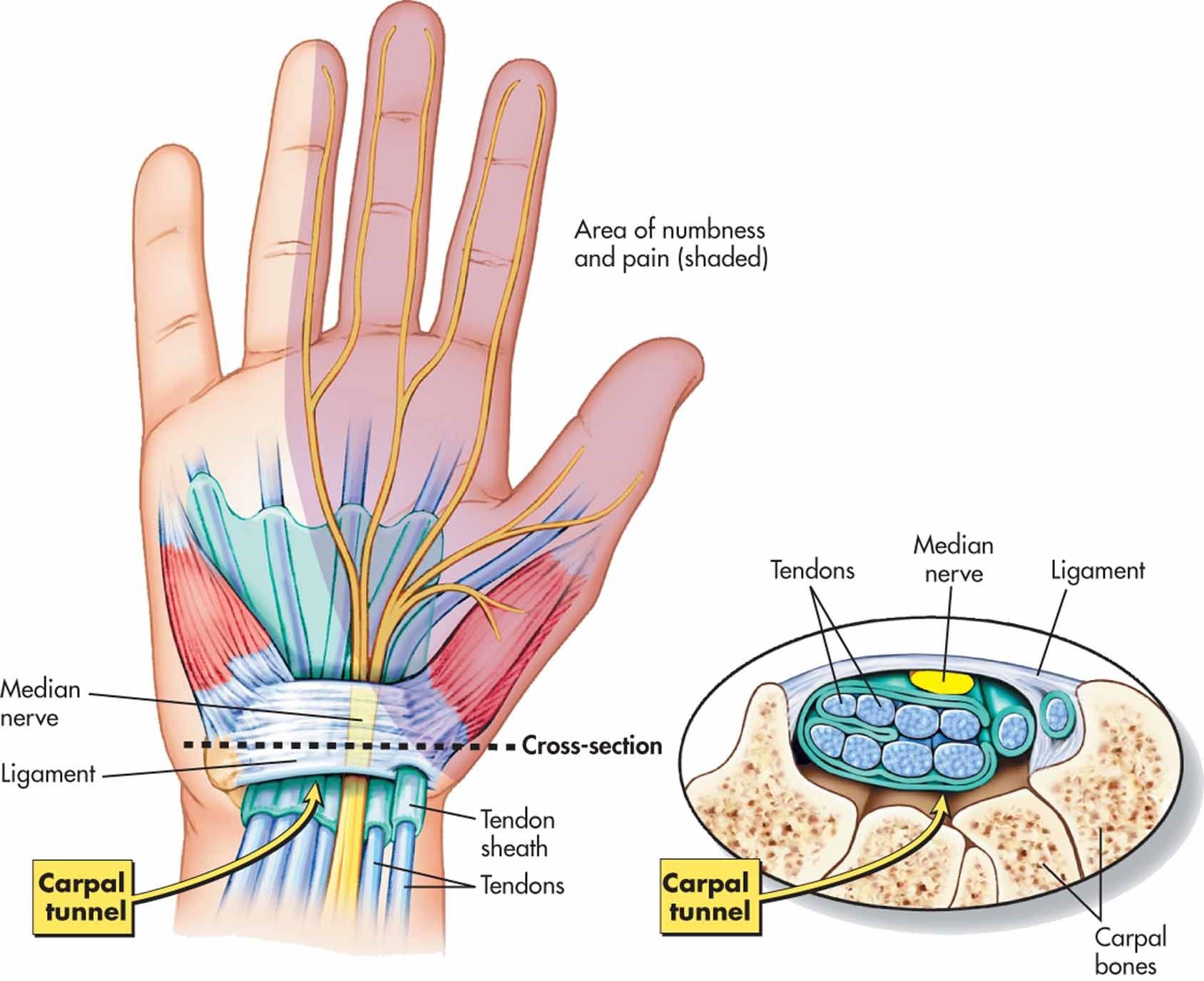Carpal tunnel syndrome is caused by compression of the median nerve as it passes through the carpal tunnel of the wrist. There is a ligament that runs across the inside of the wrist at the base of your hand. This ligament acts to protect the median nerve and the flexor tendons (i.e. the tendons of the muscles that flex the wrist and fingers).
This condition commonly occurs in occupations involving a lot of mechanical load on the wrists and hands, such as office workers (typing), carpenters, hairdressers, cleaners, kitchen and restaurant workers. Increased mechanical load on the tendons of the wrist and hand often results in inflammation of the tendons where they pass through the carpal tunnel. This inflammation results in less room for the tendons and nerve to move smoothly through the carpal tunnel and can result in compression and irritation of the median nerve. This nerve is essential for providing sensation and power to the hand.
Other causes of carpal tunnel syndrome include:
- Obesity
- Rheumatoid arthritis
- Pregnancy
Signs that you might be experiencing carpal tunnel syndrome:
- Pain in the wrist (can also radiate up the affected arm)
- Pins and needles or numbness - these symptoms vary between patients, but most commonly affect the thumb, index and middle finger
- Patients can experience weakness of the hand and loss of co-ordination with more progressive cases
You may notice these symptoms with activities that involve gripping with the hand. Patients also commonly complain of experiencing symptoms at night or early in the morning.
What is the best way to manage Carpal Tunnel Syndrome?
Your therapist will conduct a number of physical examination procedures to provoke your symptoms. They may send you for a diagnostic procedure such as a nerve conduction study, ultrasound or an MRI to confirm the diagnosis
- Initially your therapist will provide you with advice on how to appropriately modify the aggravating activities in order to prevent further inflammation. You may also be advised to use a splint or hand brace
- Manual therapy such as soft tissue release and nerve mobilisation techniques can also help with symptom relief
- Surgical release of the carpal tunnel is only required if conservative management is unsuccessful. It is considered a minor procedure and is designed to reduce pressure on the median nerve by creating more space in the carpal tunnel. Your therapist will monitor the progression of the condition and refer you on to a hand specialist if required

